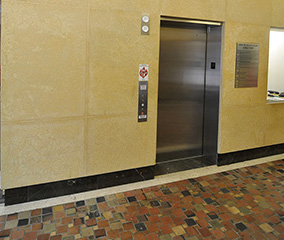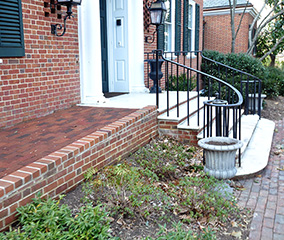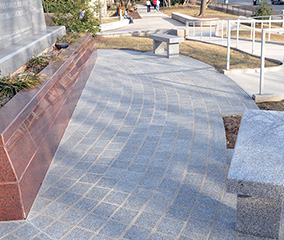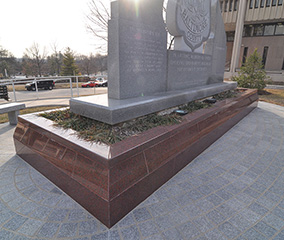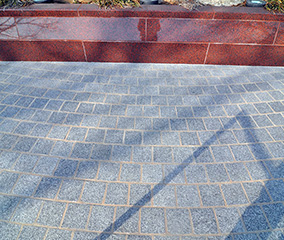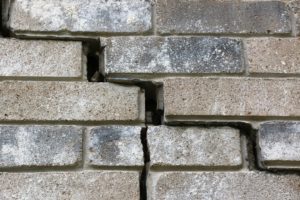
Look for stair-step cracks that indicate problems with your brick building’s foundation.
Damaged foundations and cracked walls not only cause unsightly blemishes to your property and wreak havoc on your resale value but also make your building hazardous. Damage in the foundation can soon mean that the entire structure is not as stable as it should be. While some cracks you spot may be cosmetic damage and can quickly be fixed by a masonry expert, others may be a sign of a sinking foundation. If you spot problems in your brick building’s foundation, contact DelPrete Masonry for an inspection by a professional. We can recommend the best steps to return your building to safety. Remember the following tips when searching for cracks in your foundation.
Interior Signs of Foundation Problems
When inside your building, cracks on the ceiling or drywall are signs of a foundational problem. Another sign may be windows or doors not closing the way they should. Sagging floorboards are also a sign of foundation concerns. If you see a leaning foundational beam in your basement, this is also a bad sign. If you spot leaks in the basement, this is also an indicator of foundation trouble.
Exterior Signs of Foundation Problems
You may have foundation integrity issues if you see spaces near your doors and windows or porch drooping. If your building’s chimney is leaning, you may also have foundation issues. However, cracks are the most telltale sign of trouble with your brick building’s foundation.
Different Cracks and Their Meanings
Not all cracks are the same. Depending on their size and direction, the damages can point to different issues and require unique solutions. The most common cracks are stair-step, horizontal cracks, and vertical cracks.
Stair-Step Brick Cracks
These stair step-shaped cracks are typically located on the exterior walls of a brick building. They indicate a shifting of the foundation and require a professional mason to fix it. This type of crack appears when bricks separate from each other as the foundation moves. This is often seen in the basements of older buildings and is often accompanied by leaks. If you have an older brick building, pay attention to leaks and have your building inspected occasionally to avoid long-lasting damage.
Horizontal Cracks
If you find horizontal cracks, it is a sure bet you have severe problems with your brick building’s foundation. This typically occurs when the ground around the building presses against its foundation, bowing the walls inward. This bowing causes cracks. Untreated, the crack manifests further, which eventually results in collapsed walls. The worst-case situation is that a foundational wall collapses, weakening your entire building to the point of total collapse! If you notice horizontal cracks, call DelPrete Masonry professionals for repair.
Vertical Cracks
Vertical cracks are typically signs of severe foundation integrity issues like horizontal cracks. These cracks are often caused by the soil shifting around your building. After many small shifts, it will eventually compound and lead to long, vertical cracks. If left alone, these cracks can create larger ones and eventually level entire walls, beams, and other supporting structures. Call a professional mason to address your brick building’s foundation if you spot cracking drywall and bowing floors.
CONTACT DEL PRETE MASONRY TODAY!
Whether you are ready to start your next masonry project or are still hesitant and have questions, Del Prete Masonry is here to help. We have the experience and expertise to get it right the first time. Questions? Want to visit some of our residential or commercial projects? Ready to set up a consultation? Feel free to give us a call at 410-683-0650 or visit us online. We are happy to serve Baltimore City and County, Harford County, Carroll County, Anne Arundel County, and Howard County. To see examples of our work and to keep up with our new and exciting projects, be sure to follow us on Facebook, Twitter, and Pinterest.
Tags: brick, brick buildings, building safety, foundations












